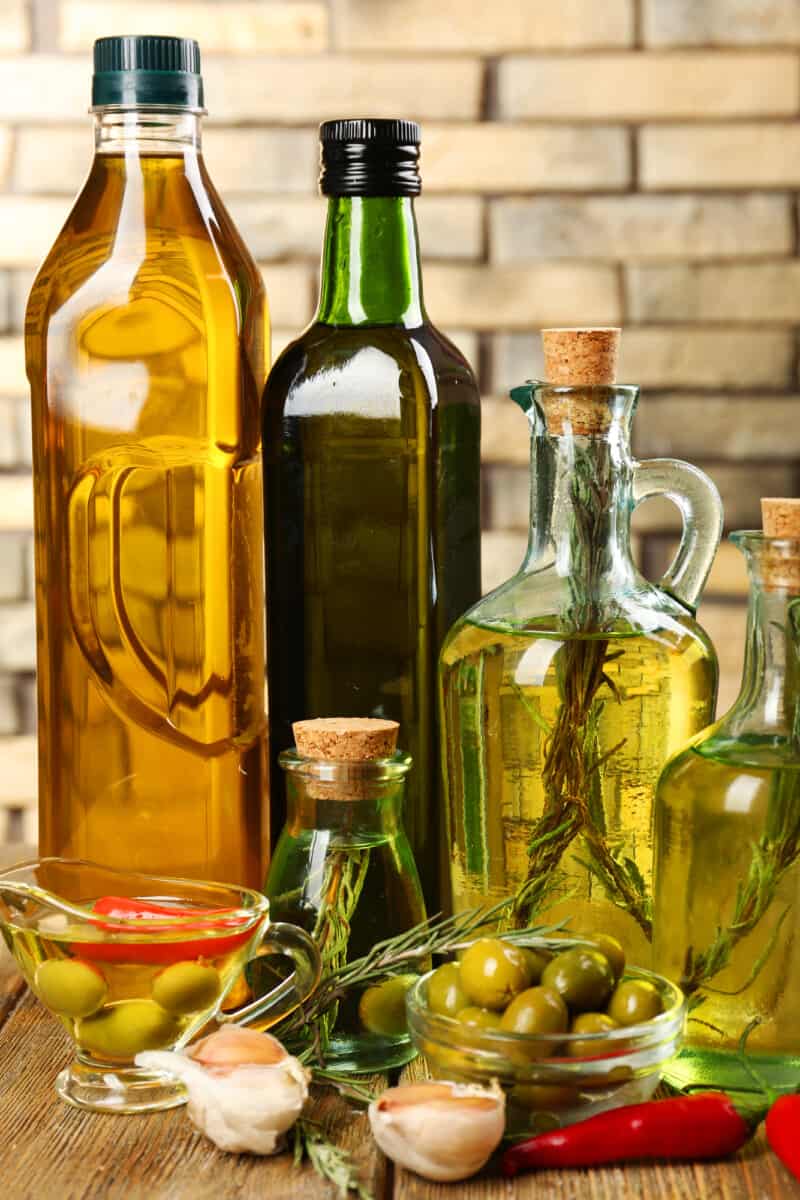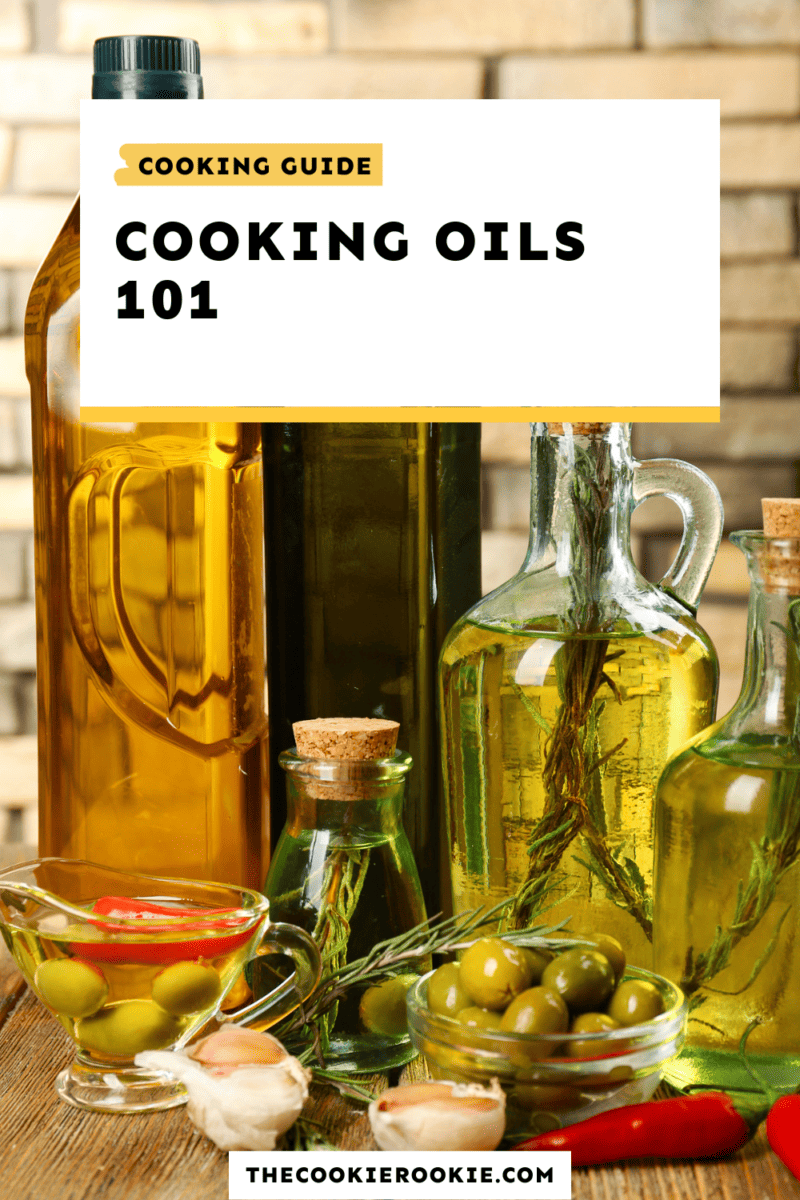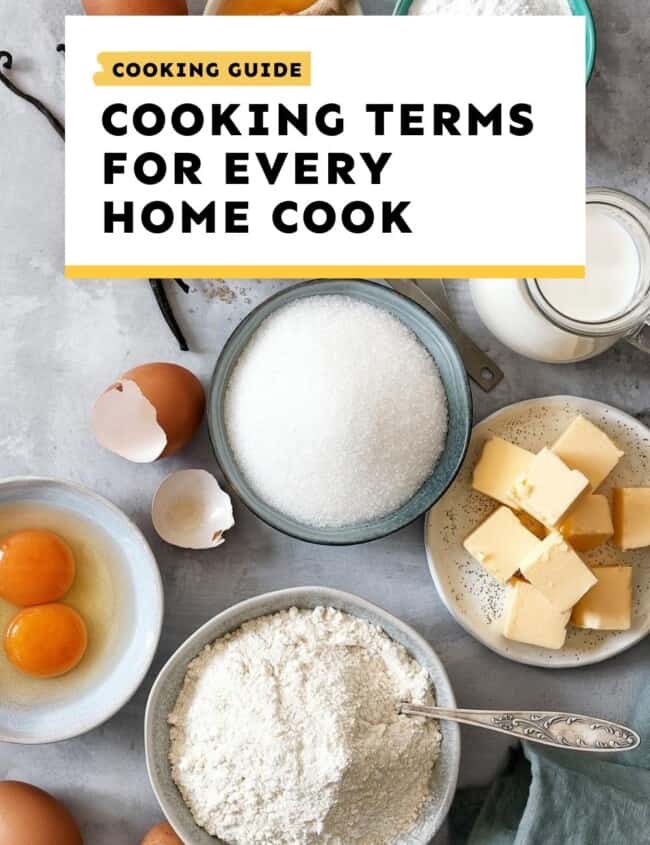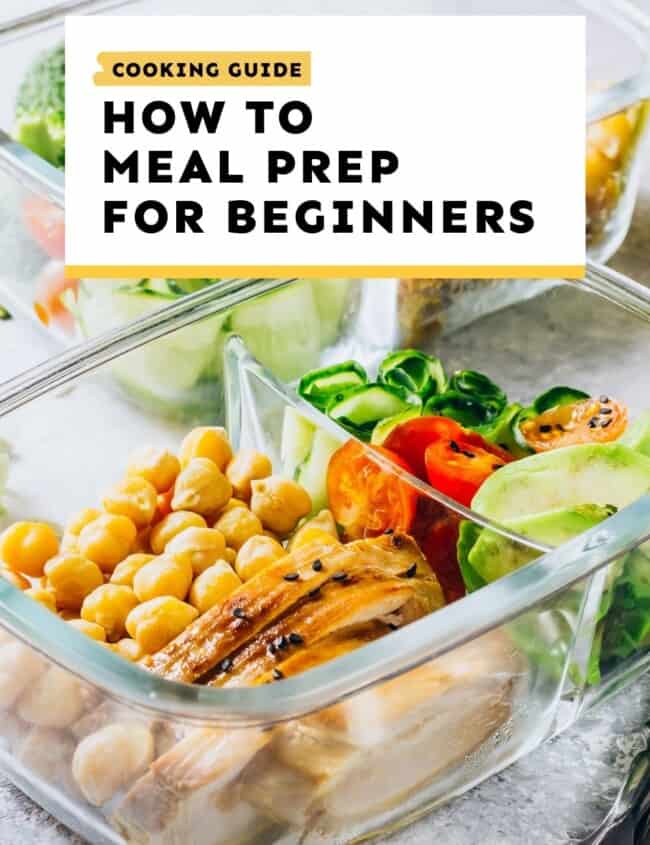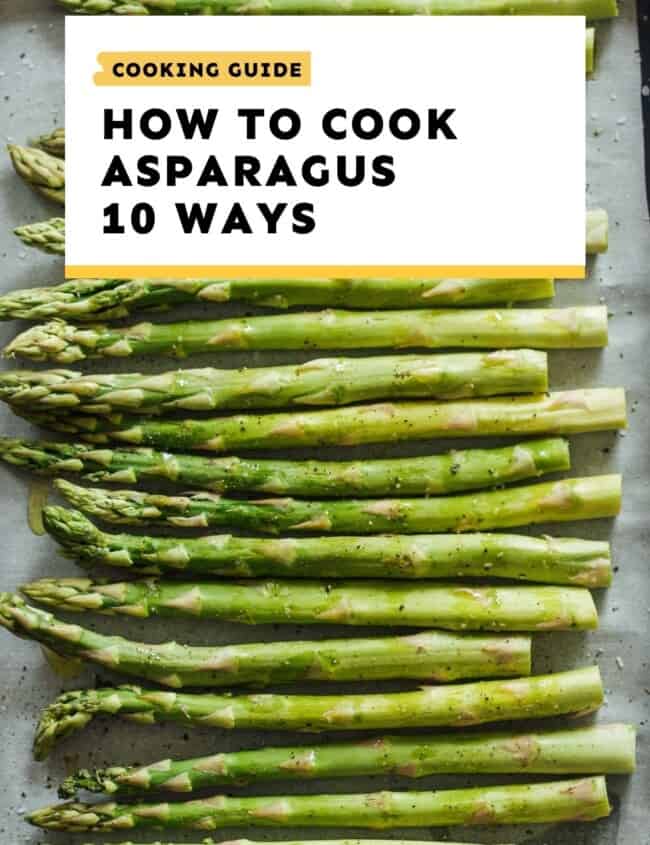Everything you need to know about cooking oils, the different types, and when to use them. Find the benefits, smoke points, and recommendations for when to use each type of oil. Including olive oil, avocado oil, peanut oil, vegetable oil, coconut oil, and more.
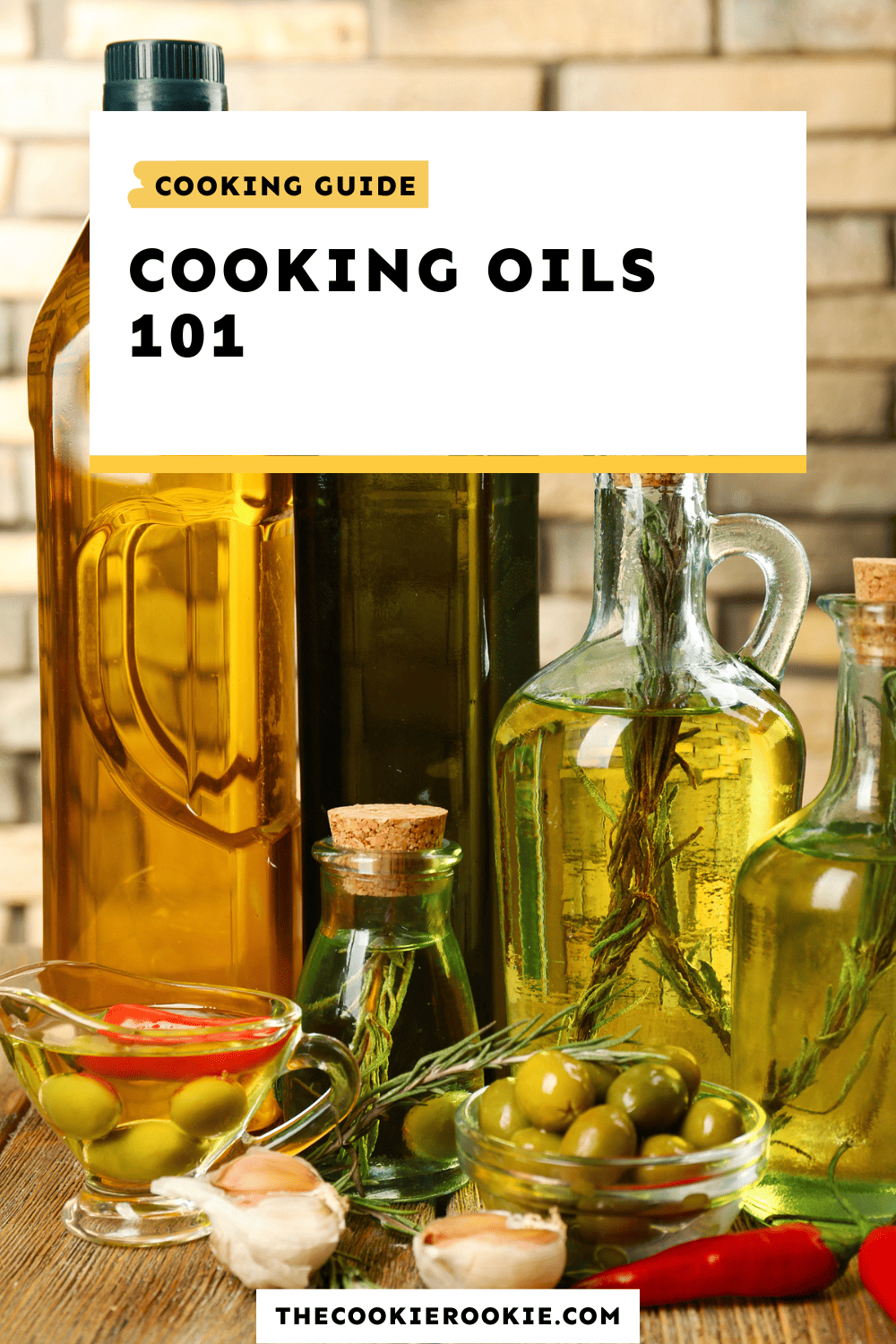
This post may include affiliate links that earn us a small commission from your purchases at no extra cost to you.
Which cooking oil should you use?
Cooking oil is one of those ingredients you’ll be using all the time in your recipes. Whether you’re frying, baking, sauteeing, roasting, or even making cold/no-heat dishes, you’ll likely find oil somewhere on the ingredients list.
There are so many different types of cooking oils out there now, so it can be overwhelming trying to decide which ones to stock in your kitchen, and when to use them. Different oils are needed for different recipes and methods of cooking, and you’ll likely prefer one over another for the sake of flavor, cost, or nutrition.
To help you out, I’m here to go over all the best cooking oils, what they’re good for, and when to use them. Plus some basic info about cooking with oils, and what some of those terms you see on the labels mean.
What is cooking oil?
Cooking oils (specifically vegetable oils) are a liquid form of fat made from pressed and processed seeds, nuts, and other parts of plants. They are used with all kinds of cooking methods, with all kinds of foods, adding better flavor and quality. Oils may be available as either refined or unrefined, which is just a slight difference in how the oils are processed.
Unrefined oils retain the flavor and nutrients from the plant they came from, whereas refined will be less flavorful and less nutritious. However, refined oils are usually better for cooking (especially at high heat), while unrefined oils don’t hold up as well when cooked (so they make good finishing and low-heat oils).
Common Types of Cooking Oil
- Olive oil
- Coconut oil
- Avocado oil
- Palm oil
- Vegetable oil
- Canola oil
- Grapeseed oil
- Peanut oil
- Sesame oil
- Flaxseed Oil
- Sunflower oil
These are the most common options, and the ones I’ll be covering in this post. However, there are quite a few other types you might come across at the grocery stores or specialty stores.
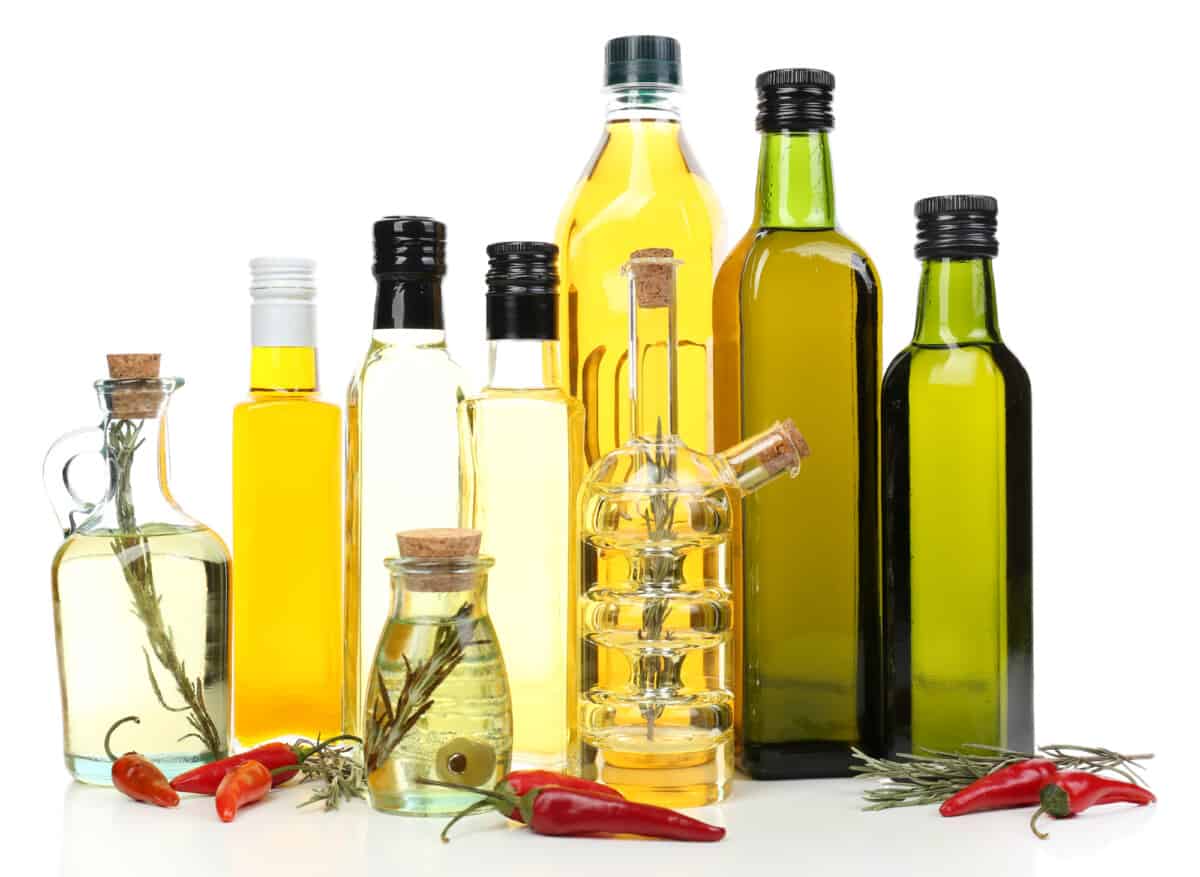

Email This Recipe
Enter your email and we’ll send the recipe directly to you!
11 Best Cooking Oils (and when to use them)
I’m breaking down some of the most common cooking oils here! Find a quick description of each type of oil, its smoke point, and when to use it.
Olive Oil
Refined (sometimes called “light”) Olive oil is an extremely versatile type of cooking oil, it’s affordable, and it has a high smoke point, which means it can be used for most cooking. This is definitely an oil to keep on hand in your kitchen for everyday use. The flavor can vary based on the quality or type of olives used, but generally the flavor is neutral enough to not interfere with the flavor of your dish.
- Benefits: versatile, affordable, neutral flavor
- Smoke Point: 465°F
- When to use it: sauteing, baking, roasting, pan frying
Extra Virgin Olive Oil (EVOO)
This one gets its own section simply because it’s so common (even though it is the same type of oil as above). But there is a difference between olive oil and extra virgin olive oil (they generally should not be used interchangeably).
This is the unrefined version, which means it’s a “purer” form of olive oil that undergoes less processing. So it tends to be more flavorful, and it has a lower smoke point. Because of that, it is better as a finishing oil.
- Benefits: more flavorful, healthy
- Smoke Point: 325-350°F
- When to use it: salad dressings, finishing oil or dip, no-heat recipes
Coconut Oil
Coconut oil is a versatile ingredient. It’s made by extracting the oil from the “meat” of coconuts. Unlike most plant-based fats, it’s solid at room temperature, but liquid when heated. This allows it to be used in different forms for a lot of different things. It works as a cooking oil, but also works as a butter-like fat in its more solid form.
- Benefits: solid at room temperature, adds flavor (unrefined)
- Smoke Point: 350°F
- When to use it: baking, sauteing, lower heat cooking, substitute for butter
Avocado Oil
Avocado oil is made by extracting oil from avocado pulp. It’s high in monounsaturated fat, which makes it a healthier option. It also has a high smoke point, which means it holds up at high temperatures, unlike some of the other healthy oil options. This makes it a great oil for pan-frying, roasting, and any high-heat cooking.
- Benefits: healthy, high smoke point
- Smoke Point: 500-550°F
- When to use it: pan-frying, sauteing, stir-frying, roasting, baking, grilling, deep-frying
Palm Oil
Palm oil is made from the fruit of oil palms (a tree). Like coconut oil, it’s solid at room temperature, which makes it a great option when a recipe calls for solid fat (like baking and pastry-making). It also has a pretty high smoke point, so it can be used for deep-frying and other high heat cooking. Look for Red Palm Oil when shopping.
- Benefits: can be used solid or liquid, high smoke point
- Smoke Point: 450°F
- When to use it: deep-frying, pan-frying, baking, grilling, high-heat cooking
Vegetable Oil
While all the oils on this list are technically “vegetable oil”, we all know the typical bottles of Vegetable Oil on the shelves at grocery stores. It’s more generic than the rest of the options (and usually comes in much larger containers). Some might be a blend of different types of oils in one, but often it is mostly corn or soybean oil. It’s a good oil to have on hand for everyday cooking.
- Benefits: Inexpensive, easy to find, versatile, neutral flavor
- Smoke Point: 450°F
- When to use it: frying, roasting, sauteing, grilling, baking
Canola Oil
Canola oil is made from a breed of the rapeseed plant. It’s similar to vegetable oil in its color, texture, flavor, and price point. It’s a neutral oil with a medium-high smoke point, so it works for most cooking. You can usually substitute canola for vegetable oil (and vice versa) when needed.
- Benefits: Inexpensive, versatile, neutral flavor
- Smoke Point: 400-450°F
- When to use it: roasting, sauteing, pan-frying, grilling, baking
Grapeseed Oil
Grapeseed oil is made from the seeds of grapes, and it usually comes out of the wine-making process. It has a light taste, a low-medium smoke point, and is high in polyunsaturated fats. It’s best for lower heat cooking, baking, and dressings. It’s also a popular choice for homemade mayo as well.
- Benefits: light flavor
- Smoke Point: 390°F
- When to use it: low- to medium-heat cooking, baking, dressings
Peanut Oil
Peanut oil is made from pressed peanuts and (not surprisingly) has a nutty flavor. Its high smoke point makes it ideal for deep frying and any high heat cooking. This obviously should not be used if anyone has nut allergies. It’s best to save this for recipes that benefit from a peanut-y flavor.
- Benefits: can be used to cook at high temperatures for long periods, adds flavor
- Smoke Point: 450-475°F
- When to use it: stir-frying, oven-roasting, pan-frying, deep-frying
Sesame Oil
Sesame oil has a great flavor and is best used when you can let that flavor stand out. Toasted sesame oil will have an even more enhanced taste, but it has a lower smoke point. You can use it for low-medium heat cooking, or as a finishing oil.
- Benefits: nutty flavor, medium smoke point
- Smoke Point: 350-410°F
- When to use it: stir-frying, marinades & sauces, finishing oil for flavor
Flaxseed Oil
This oil is made from pressed flax seeds, and it’s also known as flax oil or linseed oil. Because of its low smoke point, this isn’t great for cooking. Instead, use it raw as a finishing oil, or in anything that won’t be heated. You’ll often see this in supplemental form because it has some great health benefits.
- Benefits: high in omega-3 fatty acids, slightly “nutty” flavor
- Smoke Point: 225°F
- When to use it: finishing oil, dressings, drizzle over dips or other foods
Sunflower Oil
Sunflower oil is made by pressing the seeds from sunflowers. It’s a versatile oil that can be used for most cooking methods.
- Benefits: high in vitamin E, high smoke point, versatile
- Smoke Point: 450°F
- When to use it: pan-frying, sauteing, roasting, grilling
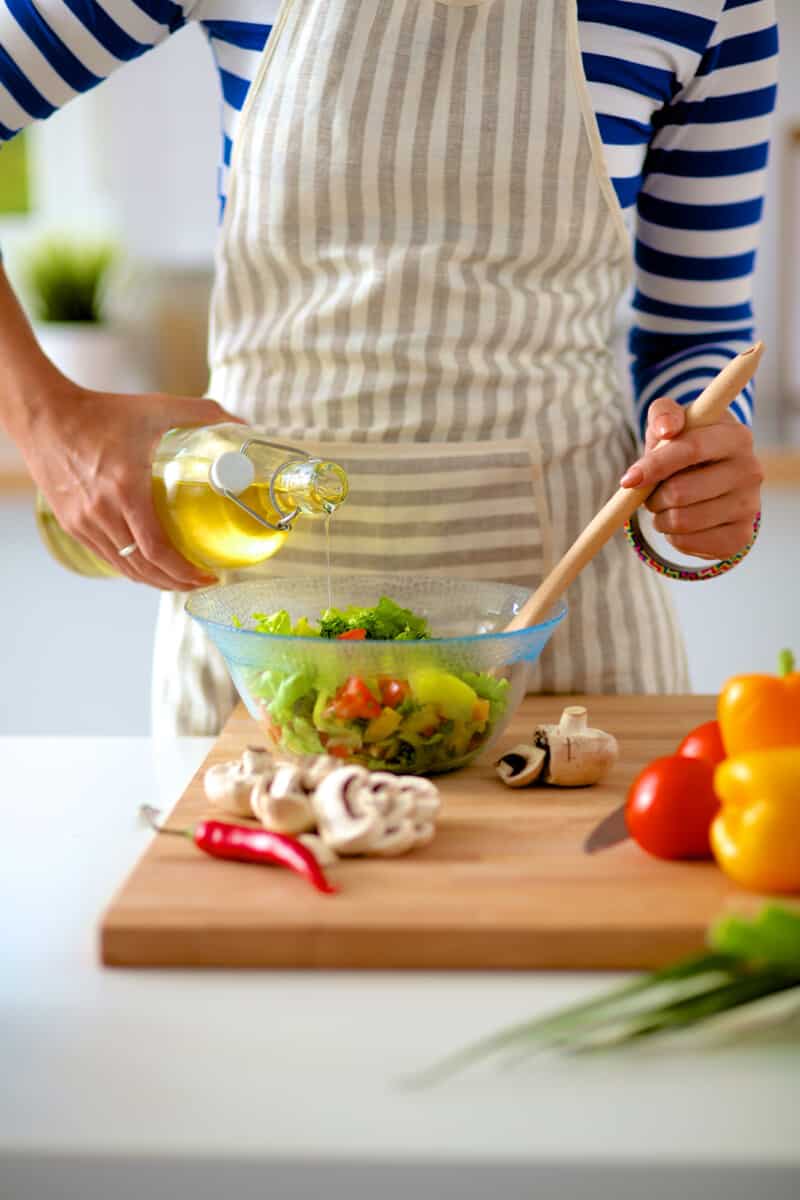
What is the best cooking oil?
What oil is “best” depends on what type of cooking you’re doing. However, olive oil is the one I recommend always having stocked in your pantry. It’s one of the most versatile, and generally it’s one of the better ones in terms of health and nutrition. It also tends to be affordable, which makes it an all-around good option.
I also recommend keeping vegetable oil on hand, since it’s cheap and has a higher smoke point. It can usually fill in when olive oil doesn’t work.
What is the healthiest cooking oil?
Olive oil is a pretty good healthy option for many types of cooking. If you want to fry or cook at high temps, then avocado oil is going to be the best option.
Flaxseed oil has a lot of health benefits, but is not great for cooking. Instead, it can be used to finish dishes or make dressings. It’s a good way to add in a quick nutrient boost.
Overall, avocado oil is probably the healthiest and most versatile option (but it’s also more expensive).
What is the best oil for frying?
The best oils for deep frying (specifically deep frying) are going to be the ones with high smoke points and low price points. Since frying requires high temperatures, you need an oil that will hold up.
For frying, I recommend using vegetable oil, avocado oil, sunflower oil, or any oil with a smoke point above 400-450°F (the higher the better).
Soybean, corn, and canola oil are typically less expensive than other high smoke point oils, like olive oil or avocado oil–although those are great if you want a healthier frying option and don’t mind paying a higher price for it.
Cooking oils should be stored in a cool, dry place–like a pantry or cabinet, away from the stove and windows. Some oils can be stored in the fridge (coconut oil or flaxseed), but a cool pantry is a safe bet for most.
Yes, they can expire and go bad. They tend to become rancid, which will add bad smells and flavors to your food. If unopened, oils will usually keep in the pantry up to 2 years. Once you start using a bottle, keep an eye on it (or rather, a nose on it, to check for bad smells). A good rule of thumb is 1 year past “best by” date if the bottle is open.
Olive oil (often labeled as “refined” or “light”) and extra virgin olive oil is the way the olives are processed to make it. Olive oil is “refined” vs. EVOO is “unrefined”. That changes their smoke point, flavor profile, and other elements.
The “smoke point” refers to the temperature at which an oil start to burn (smoke). Cooking with an oil at a temperature higher than its smoke point is not recommended for overall food quality.
Basically, unrefined oils are the most “pure” version after extraction, whereas refined oils have been processed further in some way. Usually they have been exposed to more chemicals and higher heat while processing. Refined oils tend to have a higher smoke point and more neutral flavor.
How to Dispose of Cooking Oil
When cooking with a lot of oil (for example, when frying foods), you might end up with a lot of oil sitting in the pan afterwards. It’s important to dispose of this excess/used oil properly. Don’t worry, it’s really simple.
First thing to note: Do not pour oil down the drain. It will most likely cause clogs and plumbing problems in the long run.
The best way to dispose of it is to:
- Let it cool after cooking,
- pour it into a disposable container (like an old yogurt container or milk carton),
- set it in the fridge or freezer until it has partially (or fully) solidified,
- then throw it out in a sealed container.
You can keep a designated container for used oil, and keep it in the fridge to add to until it’s full. If you have oil that’s gone bad, throw it out in its original bottle (with lid).
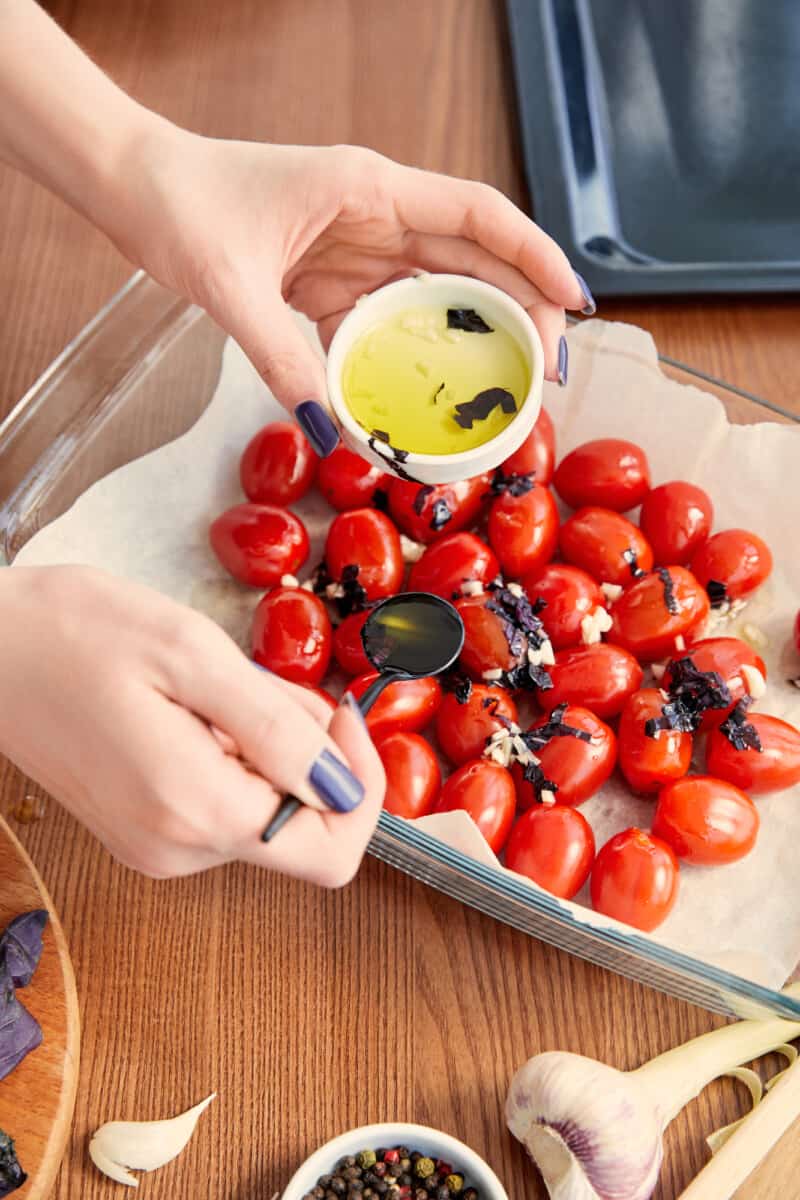
Now that you know just about everything about cooking oils, the different types, and the best oils for each cooking method, you can be sure you’ll get the best flavor and quality for all of your favorite dishes. Be sure to stock up on the ones you use most!
More Cooking Info
Check out our cooking and kitchen guides to learn everything you need to know about cooking!
